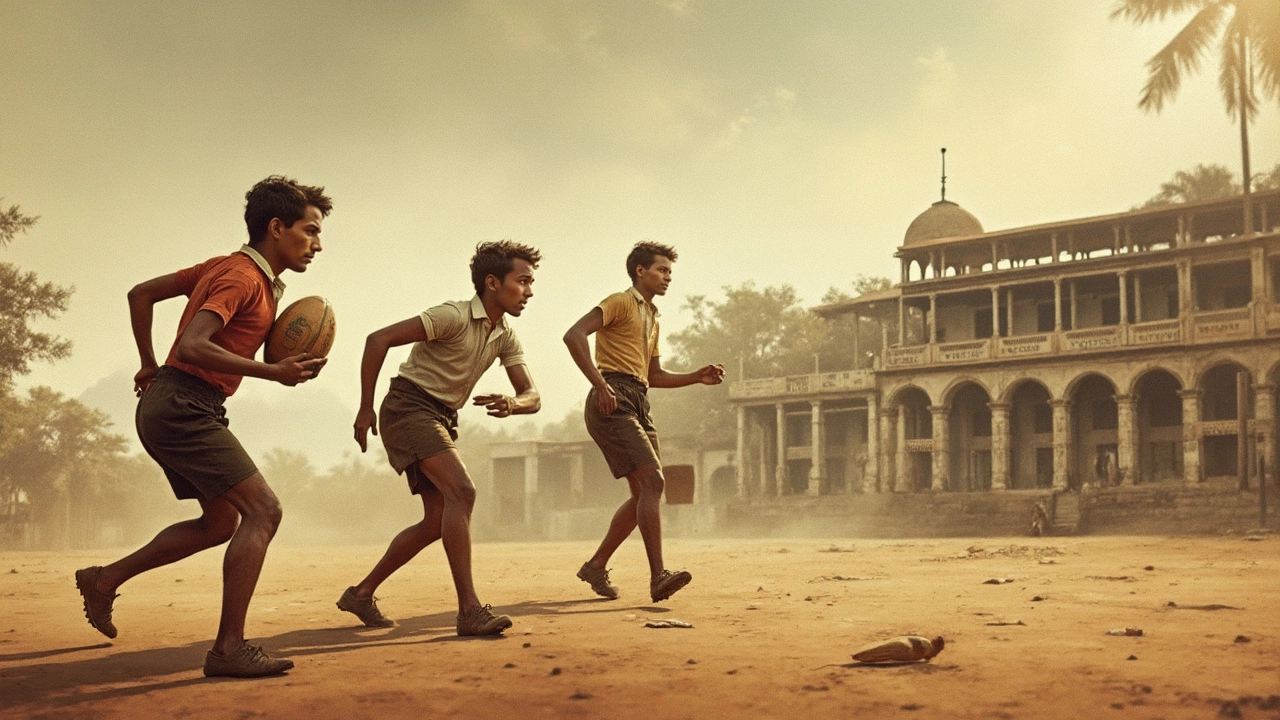So, you hear it all the time—‘he’s scored a try!’ But have you ever stopped and wondered why a big moment in rugby is called that? Here's the wild part: when rugby first kicked off, a try didn’t score you points at all. Sounds weird, right?
Let’s get practical. If you’re watching a fixture and someone touches the ball down over the try line, it counts as a try. Today, that’s five points for the team. But back in the day, you didn’t actually get points for touching the ball down. Instead, you earned the right to “try” kicking at the posts for a goal. That’s literally where the word comes from—your touchdown basically just gave you a shot at scoring real points with a kick.
- What Is a Try in Rugby?
- The Odd Reason Behind the Name
- How Scoring Has Changed Over Time
- Tips for Watching and Enjoying Rugby Fixtures
What Is a Try in Rugby?
A try is the headline play in rugby, and it’s what everyone gets loud about at every match. To score a try, a player has to ground the ball over the opponent’s goal line in the in-goal area. Basically, you have to press the ball down in the right spot while keeping control—no juggling, no dropping while sliding in. The move not only takes muscle and speed, but a good bit of tactical thinking.
In rugby today, a try is worth five points. Some folks confuse this with a touchdown in American football, but in rugby, you can’t just cross the line—you have to actually apply downward pressure on the ball. If you mess that up, no points, even if you get to the line in style.
- A try is worth five points.
- You have to make clean contact with the ball, pushing it down over the line.
- Once you score, your team gets a chance for a ‘conversion kick’ to add two extra points.
Check out some top-level rugby fixtures and you’ll see tries happen in all kinds of ways: lightning-speed sprints down the wing, clever passing through the whole team, or even scrumming over the line an inch at a time. The rule’s pretty simple but getting it done takes timing, guts, and awareness of everyone on the field.
One fun fact—according to World Rugby, the average number of tries per match in the 2023 Men’s Rugby World Cup was almost 6 per game. That tells you just how essential tries are to how the game flows and how teams rack up points.
The Odd Reason Behind the Name
Alright, let’s clear up the mystery behind why a ‘try’ is called a try in rugby. Back in the mid-1800s, when the game was still finding its feet at English schools, scoring worked very differently than it does now. Touching the ball down over the line (that’s what we now call a ‘try’) didn’t get you points. Not a single one. Instead, it let your team have a "try" at kicking the ball between the goalposts for a goal. And back then, only goals counted for the final score.
The saying ‘try at goal’ comes straight out of the old rulebooks. Only if you kicked the goal after the touch down did you actually put numbers on the board. This is why when you watch older matches, the commentary can be confusing compared to today’s game. The ‘try’ itself was just a chance—like earning a penalty shot in hockey, but with way more mud and scrums involved.
Let’s break it down with a quick side-by-side look at old vs. modern scoring:
| Era | What a Try Got You |
|---|---|
| 1800s | Just a chance to kick for a goal (no points) |
| Modern day | 5 points straight up (+2 for converting the kick) |
In those early rugby fixtures, defenders often let attackers carry the ball over the line, because a try by itself wasn’t dangerous unless it led to a successful goal kick. The name stuck around, though, even after the rules changed and ‘tries’ started to count for points on their own. Sometimes, these old traditions just refuse to die, and rugby fans kind of like it that way—it’s part of the game’s charm.

How Scoring Has Changed Over Time
Back in the early days of rugby, scoring looked nothing like it does now. At first, the only thing that really counted for points was a successful kick at goal. Touching the ball down in the in-goal area—a “try”—just gave you a shot at kicking for points. If you didn’t nail the kick, your hard-earned run across the pitch meant nothing on the scoreboard. Brutal, right?
The shift started in 1875. Before that, for most fixtures, you only got points for goals. After that, they started experimenting: a try was now worth something on its own, but not much. Over the years, the value of tries climbed, and rules flipped. By 1891, a try was worth two points in international matches, and a kick (conversion) added another three.
| Year | Try Value | Conversion Value |
|---|---|---|
| 1891 | 2 points | 3 points |
| 1900 | 3 points | 2 points |
| 1971 | 4 points | 2 points |
| 1992 | 5 points | 2 points |
That last update in 1992 turned the try into the main way to score in rugby. The point values made people focus more on running the ball and trying to cross the line, which sped up the game and made it a lot more exciting for fans.
So when you’re watching any rugby fixture now, every try is a huge deal. Points can swing a match, and teams build their whole game plan around breaking through for those score-heavy highs.
Tips for Watching and Enjoying Rugby Fixtures
Catching a rugby fixture can be a blast—if you know what's going on. Here are some real tips to get the most out of your next game, so you're not left wondering what just happened when the crowd erupts over a try.
- Learn the basics: Scoring a try is five points. A conversion kick adds two more, and penalties or drop goals are worth three each. Once you know this, it’s easy to track the action.
- Watch the flow: Rugby doesn’t stop much. After a try, play restarts pretty quickly. Teams line up, and you’ll want to watch how fast things can shift from defense to attack. It’s all about momentum.
- Spot the set pieces: Scrums and lineouts look confusing at first, but they’re key to understanding big shifts in possession. In 2024, there were over 25 scrums per match in the Six Nations—a stat that shows just how vital they are.
- Listen to the ref (and commentators): Rugby refs mic up so you can actually hear decisions and explanations in most pro fixtures. It helps a ton if you’re new and want to figure out what’s a penalty or why someone got carded.
- Check out team line-ups before the game: Knowing who’s starting gives you insights on strengths, weaknesses, and who’s likely to get over the try line. Big names like Antoine Dupont or Maro Itoje can change a game fast.
- Use a fixture tracker: Sites like ESPN Scrum or the official World Rugby page keep you updated with schedules, scoreboards, and player stats in real time. No need to feel lost if you join midway.
Here’s a quick reference table for common rugby scores—makes it easy to follow along:
| Scoring Action | Points Earned |
|---|---|
| Try | 5 |
| Conversion Kick | 2 |
| Penalty Goal | 3 |
| Drop Goal | 3 |
One last thing—rugby is way more fun with friends. Grab a buddy, share some snacks, and see who can predict the next try. If you’re ever confused, don’t worry, most rugby fans are more than happy to explain stuff if you ask.


